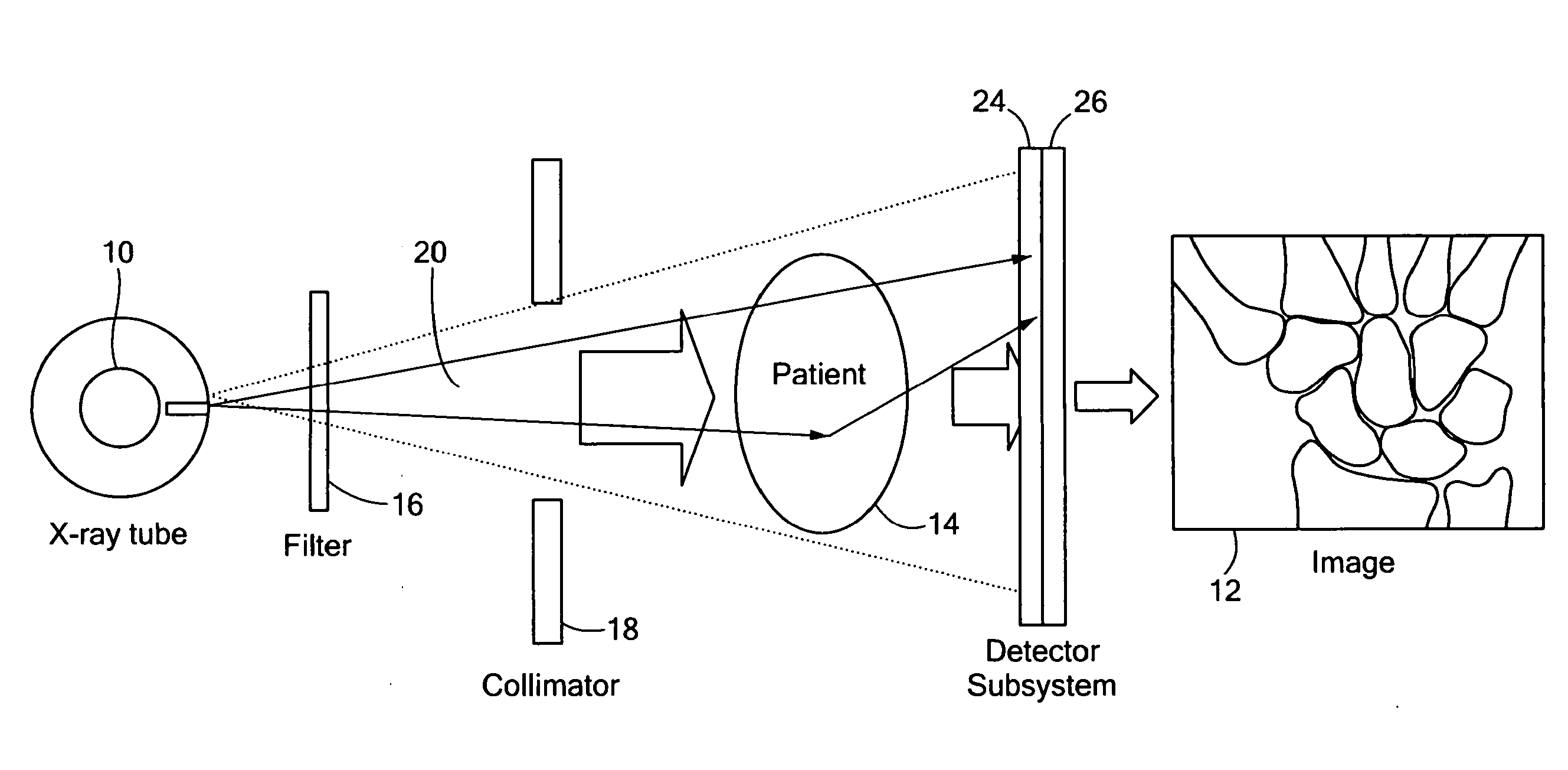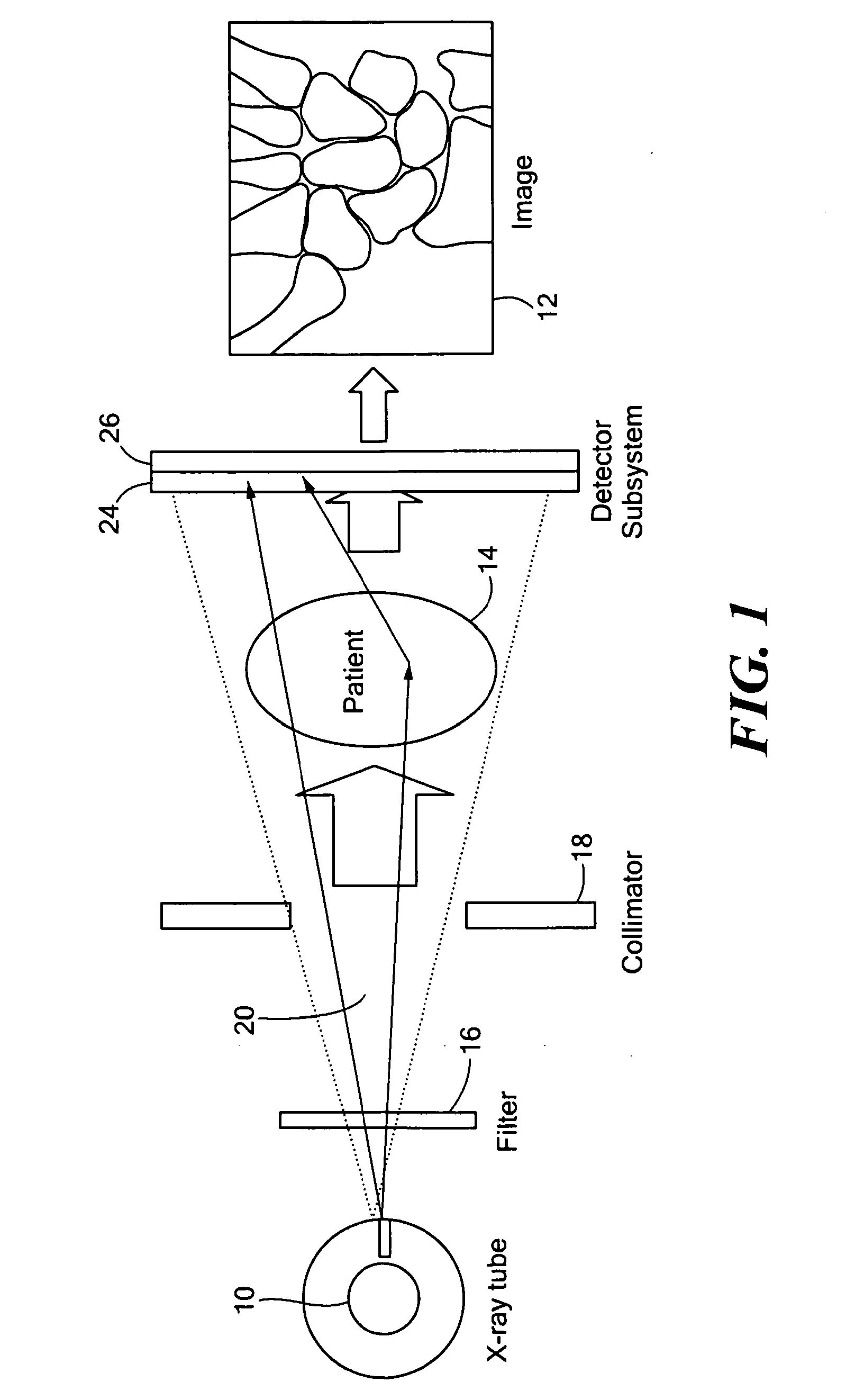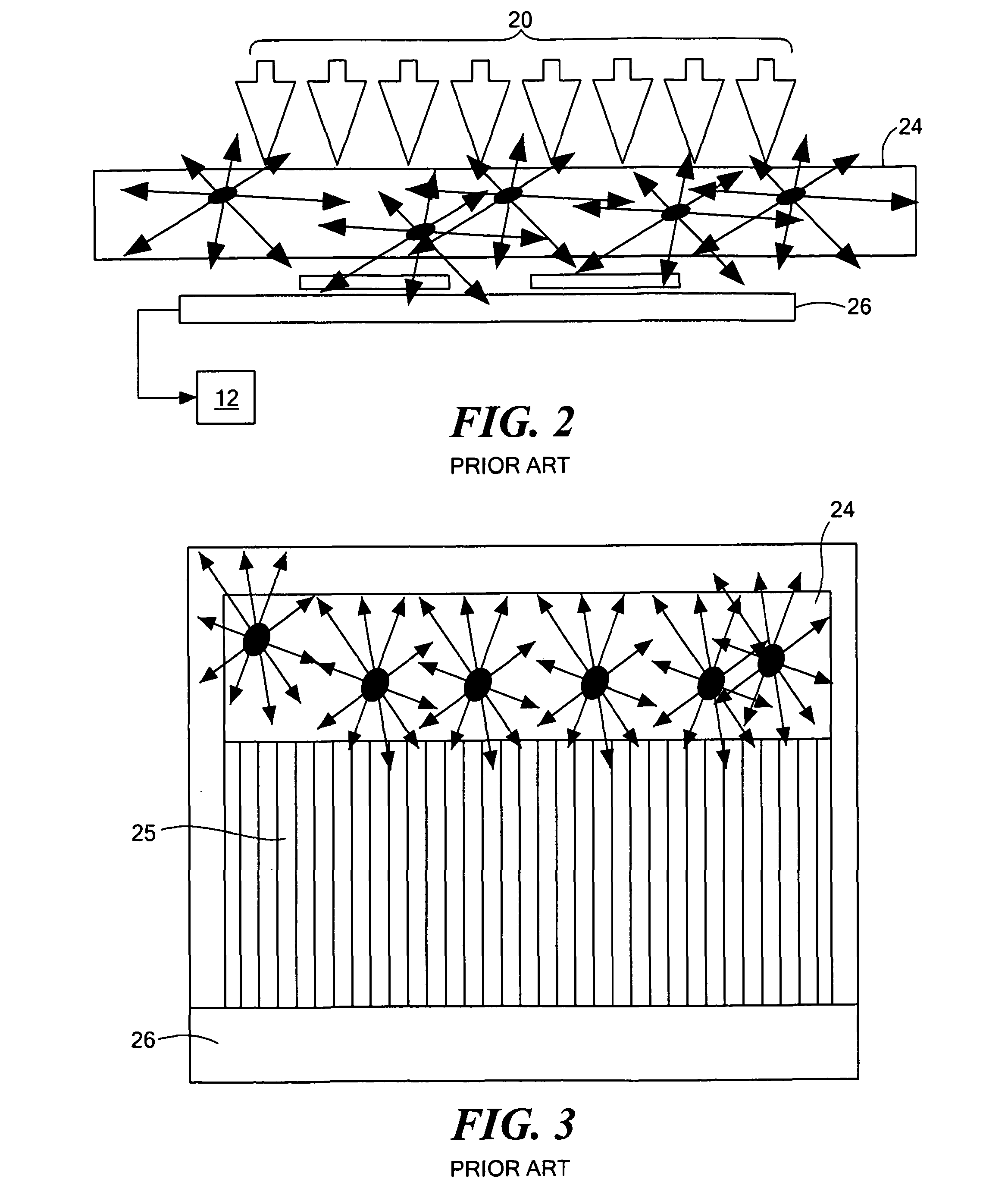High definition scintillation detector for medicine, homeland security and non-destructive evaluation
a scintillation detector and high-definition technology, applied in the field of x-ray imaging, can solve the problems of limiting the clinical utility of cardiac ct, unable to differentiate between vulnerable and stable plaques, and unable to perform non-invasive determination of coronary plaque composition, etc., to achieve the effect of improving spatial resolution and dqe, and improving spatial resolution
- Summary
- Abstract
- Description
- Claims
- Application Information
AI Technical Summary
Benefits of technology
Problems solved by technology
Method used
Image
Examples
Embodiment Construction
[0030]FIG. 1 shows the imaging chain of a typical imaging system from X-ray generation at source 10 to the final image produced by image processing electronics 12. The X-ray photons that are too low in energy to make it across a patient or other subject of study 14 are filtered out by a filter 16. The X-ray beam, after filtration, is collimated in a collimator 18 to limit the rays to passes through the patient or subject 14. The photon flux along the principle ray is attenuated in a density-dependent manner, thus imprinting the anatomical information in the subject 14 in the X-ray beam 20. A large fraction of the X-ray beam 20 traveling through the patent 14 is scattered and contributes significantly to X-ray dose and image noise.
[0031]In the prior art, and as shown in FIG. 2, a digital detector subsystem 22 comprises a scintillation layer 24 typically grown on a semiconductor sensor layer 26 which converts X-ray energy directly into a digital image. A digital detector consists of a...
PUM
| Property | Measurement | Unit |
|---|---|---|
| diameters | aaaaa | aaaaa |
| refraction index | aaaaa | aaaaa |
| refraction indices | aaaaa | aaaaa |
Abstract
Description
Claims
Application Information
 Login to View More
Login to View More - R&D
- Intellectual Property
- Life Sciences
- Materials
- Tech Scout
- Unparalleled Data Quality
- Higher Quality Content
- 60% Fewer Hallucinations
Browse by: Latest US Patents, China's latest patents, Technical Efficacy Thesaurus, Application Domain, Technology Topic, Popular Technical Reports.
© 2025 PatSnap. All rights reserved.Legal|Privacy policy|Modern Slavery Act Transparency Statement|Sitemap|About US| Contact US: help@patsnap.com



